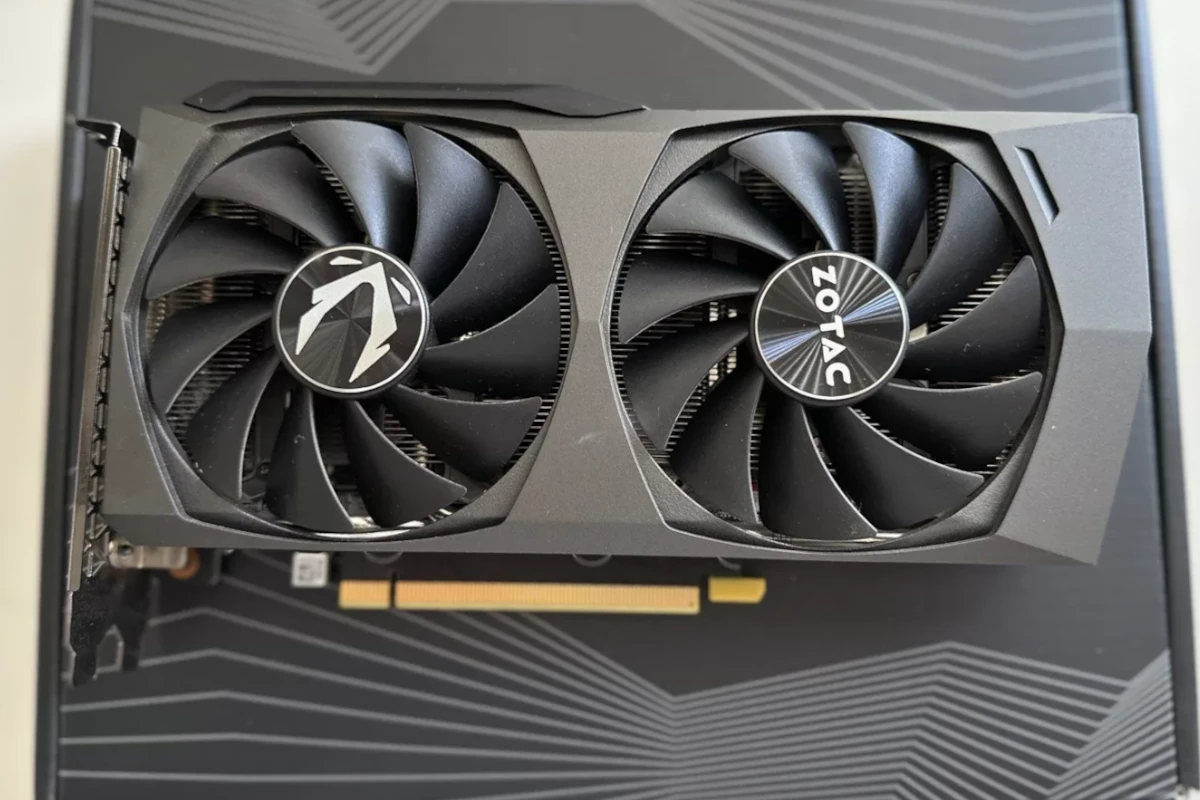Graphics card fans play a crucial role in keeping GPUs cool during operation. When these fans stop spinning, it can lead to performance issues or even hardware damage. GPU fans may not spin due to various reasons, including incorrect fan control settings, driver problems, or hardware malfunctions.
Troubleshooting non-spinning GPU fans involves several steps. Users should first check fan control settings in their GPU software. Updating graphics drivers and BIOS can often resolve the issue. If software solutions fail, inspecting the physical connections and cleaning the fans may be necessary.
Understanding the causes and solutions for non-spinning GPU fans helps users maintain their graphics cards effectively. This knowledge empowers computer enthusiasts to diagnose and fix issues, potentially saving money on repairs or replacements.
GPU Fans Not Spinning? Here’s How to Fix It

A graphics card that isn’t properly cooled can suffer serious damage. If your GPU fans aren’t spinning, it’s crucial to troubleshoot the problem immediately.
1. Check the Obvious Stuff
- Power Connections: Ensure the power cables to your GPU are securely connected.
- Monitor Connection: Make sure your monitor is plugged into your graphics card, not the motherboard. Sometimes, if the system isn’t detecting a display connected to the GPU, it might not power on the fans.
- Driver Issues: Outdated or corrupted graphics drivers can sometimes cause fan issues. Update to the latest drivers from the NVIDIA or AMD website.
2. Software and BIOS Settings
- GPU Monitoring Software: Use programs like MSI Afterburner or GPU-Z to check your GPU’s temperature and fan speed. These tools can often control fan curves manually.
- BIOS Settings: Access your computer’s BIOS (usually by pressing DEL or F2 during startup). Look for settings related to fan control or your PCI-e slots. Ensure they are configured correctly.
3. Physical Inspection and Cleaning
- Dust Buildup: Dust can obstruct fan rotation. Carefully clean your GPU’s fans and heatsink using compressed air.
- Fan Obstructions: Make sure no cables or other components are blocking the fans.
- Loose Connections: Inspect the fan’s connection to the graphics card. It might be a simple loose or disconnected cable.
4. Advanced Troubleshooting
- Testing with Another System: If possible, test your GPU in another computer to see if the fans spin. This helps isolate whether the problem is with the card itself or your system.
- Replacing the Fan: If you’ve determined the fan itself is faulty, you might be able to replace it. Search online for replacement fans compatible with your GPU model.
5. When to Seek Professional Help
- Warranty: If your GPU is still under warranty, contact the manufacturer for support or a replacement.
- Repair Shops: If you’re not comfortable with advanced troubleshooting, consider taking your GPU to a qualified repair shop.
Optimizing GPU Cooling
Keeping your GPU cool is essential for its performance and longevity. Here are some tips to improve cooling:
- Case Airflow: Ensure your computer case has good airflow. Consider adding more fans if necessary.
- Cable Management: Properly route cables to avoid obstructing airflow.
- Regular Cleaning: Clean your GPU and case fans regularly to prevent dust buildup.
- Thermal Paste: If you’re comfortable with it, reapplying thermal paste to the GPU can improve heat transfer.
- Undervolting: In some cases, undervolting your GPU can reduce heat output without significantly impacting performance.
Key Takeaways
- GPU fans may stop spinning due to software settings, driver issues, or hardware problems
- Checking fan control settings and updating drivers are initial troubleshooting steps
- Physical inspection and cleaning can resolve hardware-related fan issues
Understanding GPU Fan Functionality
GPU fans are crucial components that regulate temperature and maintain optimal performance. These cooling systems employ various mechanisms to ensure efficient heat dissipation and prevent overheating during intensive tasks.
Components of the GPU Cooling System
GPU cooling systems consist of several key elements. The heatsink, made of heat-conductive materials like aluminum or copper, absorbs heat from the GPU chip. Thermal paste enhances heat transfer between the chip and heatsink. Heat pipes distribute heat across the heatsink’s surface area.
The fans, typically ranging from one to three, are mounted on the heatsink. They create airflow to expel hot air from the GPU and draw in cooler air. Some high-end GPUs use vapor chamber cooling for improved heat distribution.
Impact of GPU Fans on Performance
GPU fans play a vital role in maintaining optimal performance. Efficient cooling prevents thermal throttling, where the GPU reduces clock speeds to avoid overheating. This ensures consistent frame rates and smooth gameplay.
Proper cooling extends the lifespan of the GPU by reducing thermal stress on components. It also allows for overclocking, enabling users to push their GPUs beyond stock speeds for increased performance.
Fan speed affects noise levels. Many GPUs implement dynamic fan control to balance cooling and noise. At low temperatures, fans may remain idle or spin slowly for silent operation.
GPU Fan Control Mechanics
Modern GPUs use sophisticated fan control mechanisms. Fan curves dictate how fan speed changes with temperature. These curves can often be customized using GPU control software.
0% fan speed typically indicates idle state for temperatures below 50-60°C. As temperatures rise, fan speed increases incrementally. Most GPUs reach 100% fan speed around 80-90°C.
Some GPUs feature zero RPM modes, where fans remain off until a certain temperature threshold. This reduces unnecessary noise and wear during light tasks. Users can usually adjust these settings to suit their preferences for cooling performance and noise levels.
Troubleshooting GPU Fan Issues
GPU fan problems can stem from hardware malfunctions, software glitches, or environmental factors. Proper diagnosis and targeted solutions are crucial for maintaining optimal graphics card performance and longevity.
Hardware Diagnostics and Fan Testing
Visual inspection is the first step in diagnosing GPU fan issues. Check for physical obstructions or damage to the fan blades. Dust accumulation can hinder fan movement, so clean the GPU thoroughly with compressed air.
Test fan functionality by manually spinning it when the system is off. If resistance is felt, the fan motor may be faulty. Use monitoring software like MSI Afterburner to track fan speeds and temperatures under load.
Ensure proper power connections. Insufficient power can prevent fans from spinning. Verify that all PCIe power connectors are securely attached to the GPU.
If fans remain stationary, consider replacing them. Many GPUs allow for fan replacement, which can be a cost-effective solution compared to buying a new graphics card.
Identifying and Resolving Software Problems
Driver issues often cause GPU fan problems. Update graphics drivers to the latest version through the manufacturer’s website or Windows Update. Outdated or corrupted drivers can lead to improper fan control.
Check GPU control panel settings. Some cards have zero-RPM modes that keep fans off at low temperatures. Adjust these settings if necessary.
BIOS updates can also address fan control issues. Visit your motherboard manufacturer’s website for the latest BIOS version and installation instructions.
Software conflicts may interfere with fan operation. Uninstall overclocking tools or fan control applications and test if the problem persists. Reinstall only essential software to isolate the issue.
External Factors and Maintenance Best Practices
Ambient temperature significantly affects GPU cooling. Ensure proper case airflow by arranging fans for optimal intake and exhaust. Keep the PC in a cool, well-ventilated area.
Regular maintenance prevents many fan issues. Clean your GPU and case fans every 3-6 months, depending on the environment. Use compressed air and soft brushes to remove dust buildup.
Monitor your power supply unit (PSU). An aging or underpowered PSU may not provide sufficient power for all components, including GPU fans. Consider upgrading if necessary.
Avoid overclocking if experiencing fan issues. Return your GPU to stock settings and observe if the problem resolves. Gradual overclocking can help determine stable settings that don’t overstress the cooling system.
Advanced Solutions for Persistent Fan Issues
If software solutions and basic hardware checks fail, more advanced troubleshooting may be necessary. Test the GPU in another system to isolate whether the issue is card-specific or related to the current setup.
Consider aftermarket cooling solutions. GPU water blocks or larger air coolers can provide better cooling performance and may resolve persistent fan issues.
Examine the PCB for signs of damage or bulging capacitors. These can indicate deeper hardware problems that may require professional repair or GPU replacement.
As a last resort, contact the GPU manufacturer’s support. They may offer RMA services or advanced troubleshooting steps specific to your model.
Frequently Asked Questions
GPU fan issues can be complex and varied. Proper troubleshooting requires understanding common problems and their solutions. Here are key questions and answers to help diagnose and resolve non-spinning GPU fan problems.
What troubleshooting steps should be taken if GPU fans are not spinning on startup?
First, check the power connections to ensure the GPU is receiving adequate power. Verify that all cables are securely plugged in.
Next, inspect the GPU for any visible damage or obstructions. Dust buildup can prevent fans from spinning freely.
If connections and physical condition appear normal, try updating or reinstalling GPU drivers. Outdated or corrupted drivers can cause fan issues.
What are common reasons for a GPU fan to fail to spin and the display to not work?
A faulty power supply unit (PSU) can cause both fan and display problems. The GPU may not receive enough power to operate properly.
Loose or damaged PCIe slot connections can also lead to these issues. Try reseating the GPU in its slot.
In some cases, a failed GPU can cause fans to stop and prevent display output. Testing the GPU in another system can help confirm this.
Can GPU fans operate intermittently and what could cause them to only spin under certain conditions?
Yes, GPU fans can operate intermittently. This is often by design to reduce noise and power consumption.
Many modern GPUs use zero-RPM modes. Fans only spin when the GPU reaches a certain temperature threshold.
Fan curve settings in GPU software can also cause intermittent operation. Adjusting these settings may change when fans activate.
How can a user manually initiate GPU fan spin to ensure they are working correctly?
Most GPU manufacturers offer software utilities to control fan speeds. These tools allow manual fan speed adjustment.
Running a GPU stress test or benchmark can increase temperatures, causing fans to spin up.
Some BIOS settings may allow manual control of GPU fan speeds. Check your motherboard manual for specific options.
What symptoms indicate a potential overheating issue due to GPU fans not spinning?
Sudden system shutdowns or crashes during graphics-intensive tasks can indicate overheating.
Graphical artifacts or screen flickering may appear as the GPU struggles with high temperatures.
Reduced performance or throttling in games or applications that use the GPU heavily can also signal overheating issues.
What are the differences in diagnosing non-spinning GPU fan issues between AMD and Nvidia graphics cards?
AMD and Nvidia cards use different driver software and utilities for fan control and monitoring.
Nvidia’s GeForce Experience and AMD’s Radeon Software offer distinct interfaces for adjusting fan curves and speeds.
Third-party software like MSI Afterburner can often work with both brands, providing a unified approach to fan control and diagnosis.





